Pain of any localization leads to discomfort and a significant decrease in quality of life.
Moreover, when the spine in the middle of the back hurts after sleep, this may indicate a large number of possible causes, the most important of which are diseases of the spinal column.
This situation greatly complicates the process of making a correct diagnosis and requires additional research methods, both laboratory and instrumental.
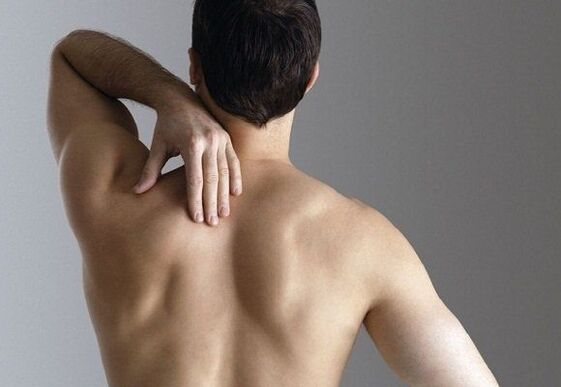
Back pain in the shoulder blade area: causes, which doctor should you consult
Pain in the shoulder blade area is a common symptom of many diseases, so it should not be associated only with damage to the spine and adjacent bones.
When making a diagnosis, pay attention to the nature of the pain and its intensity.
It is important to take into account concomitant diseases, previous injuries and medications that relieve symptoms.
Only a comprehensive analysis of the state of the body will allow us to accurately determine the causes of pain.
In some cases, the patient complains that he has pain between the shoulder blades.
Such localization is typical, first of all, for diseases of the thoracic spine - osteochondrosis, scoliosis, kyphosis, spondyloarthrosis, intervertebral hernia, protrusion of the intervertebral disc.
Also, pain between the shoulder blades can be observed with coronary heart disease, intercostal neuralgia, and gastrointestinal diseases.
The causes of pain that cause pain under the right or under the left shoulder blade are different.
Herniated disc
Among the pathologies of the spinal column that provoke painful sensations is a herniated disc.
A herniated disc is diagnosed by a neurologist based on CT or MRI data. The cause of the disease is due to disruption of the fibrous structure of the intervertebral disc and displacement of its nucleus.
Since the thoracic spine, from a physiological point of view, does not experience such a significant load as the cervical or lumbar spine, hernias are rarely detected here. However, such a possibility exists.
Pain from hernias is associated with stress and is localized at one point. With a pathological process in the thoracic spine,pain is often felt in the scapular region. Pain may spread to the chest and tingling in the heart.
Ignoring pain can lead to serious complications:
- rachiocampsis;
- decreased sensitivity of the lower extremities;
- trophic disorders of the lower extremities;
- paraparesis of the lower extremities;
- dysfunction of the pelvic organs.
Scoliosis

Scoliosis is a three-plane deformity of the human spine. In this case, the muscles tense unevenly: some of them are constantly in action, some are relaxed. Characteristic is the appearance of back pain in the area of the shoulder blades, most often in the interscapular area.
With scoliosis, the shape of the chest changes, so disturbances in the functioning of the cardiovascular and respiratory systems may occur. This condition is often the reason for visiting a doctor.
Sometimes the first warning sign ispain right backshoulder blades or similar sensations under the left shoulder blade. After a physical examination by a doctor, an important step is to obtain an X-ray image of the spine. It is the x-ray that confirms the diagnosis of scoliosis.
Osteochondrosis
With osteochondrosis, the joint is affected, namely its cartilaginous part. Most often, intervertebral discs are destroyed. Depending on the location of the pathological process, thoracic, lumbar and cervical osteochondrosis is distinguished.
Pain in the scapular region occurs with osteochondrosis of the cervical or thoracic regions. The pain is nagging, worsens with coughing and sneezing, and can be felt near the left and right shoulder blades.
The affected vertebrae are characterized by low mobility. Pinching of the nerve roots is possible - in this case, neurological symptoms are associated.
Spinal tuberculosis
Spinal tuberculosis is an infectious disease caused by mycobacteria. In most cases, tuberculosis primarily affects the lungs, but the secondary pathological focus can be localized in other organs.
Pain is a constant symptom of spinal tuberculosis. The causes of pain are dual in nature:
- Back pain in the area of the shoulder blades is observed when the cervical spine is affected. This occurs due to compression of the nerve roots and irradiation of excitation. Characteristic pain is on the right back or left back.
- The pain is localized directly above the site of the lesion - above the vertebra. It can be in the middle of the back, in the neck or lower back. The causes of pain are destructive processes in the bone and developing inflammation. A zone of increased sensitivity is determined above the pathological focus.
In the early stages of spinal tuberculosis, X-ray diagnostics are not very informative. You should pay attention to changes in your health and be alert if characteristic symptoms occur.
Symptoms acquire particular significance in cases of existing or cured pulmonary tuberculosis.
Spondyloarthrosis
Pain can also be caused by spondyloarthrosis. This disease is based on dystrophic-degenerative processes that affect all components of the joints of the spine.
Pain in the interscapular region with spondyloarthrosis occurs when the damaged joint is localized in the thoracic region.
The back hurts constantly, aching pain is typical. Increased discomfort occurs with movement and physical activity. As a rule, there are no complaints about a feeling of numbness and impaired movement of the upper limbs. The movement of the spine in the affected area is limited.
Intercostal neuralgia
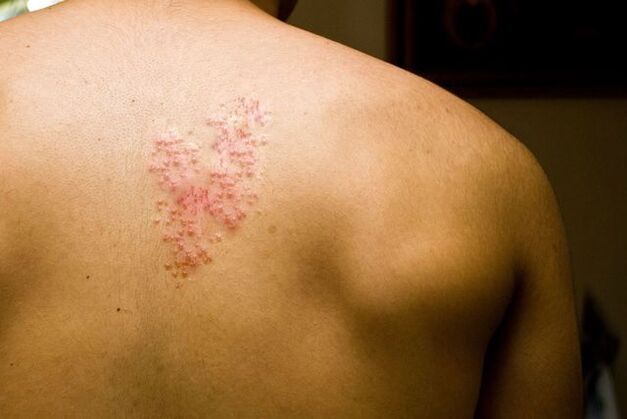
The causes of pain in the middle of the back with intercostal neuralgia are compression or irritation of the roots of the intercostal nerves. The pain is burning and aching, usually felt in the chest. It can be felt under the shoulder blade on the right back or in the area of the left shoulder blade.
Increased pain occurs when inhaling and exhaling, coughing and sneezing, and sudden changes in body position.
Pain can occur when pressing on certain points along the intercostal spaces, the spine, it is felt from the shoulder blade on the right behind or next to the left shoulder blade. There is no sensitivity at the site of injury, that is, numbness occurs.
A characteristic feature of the disease is changes in the autonomic nervous system. Attacks of neuralgia are often combined with increased sweating, redness or paleness of the skin over the nerve passages, and tingling in the chest.
Diseases of internal organs
The internal organs fit quite tightly to the bone frame, and therefore it is easy to make a mistake in identifying the pathological focus. However, there are a number of diseases of internal organs that can cause pain in the shoulder blades:
Angina pectoris
A common disease based on a discrepancy between the heart's need for oxygen and the ability to supply it. A typical manifestation is compressive pain behind the sternum, radiating to the left arm.
Other types of pain syndrome are also possible. Pain in the scapular region, under the left shoulder blade, can be attributed to atypical manifestations of the disease. The pain is relieved by taking nitroglycerin.
Myocardial infarction
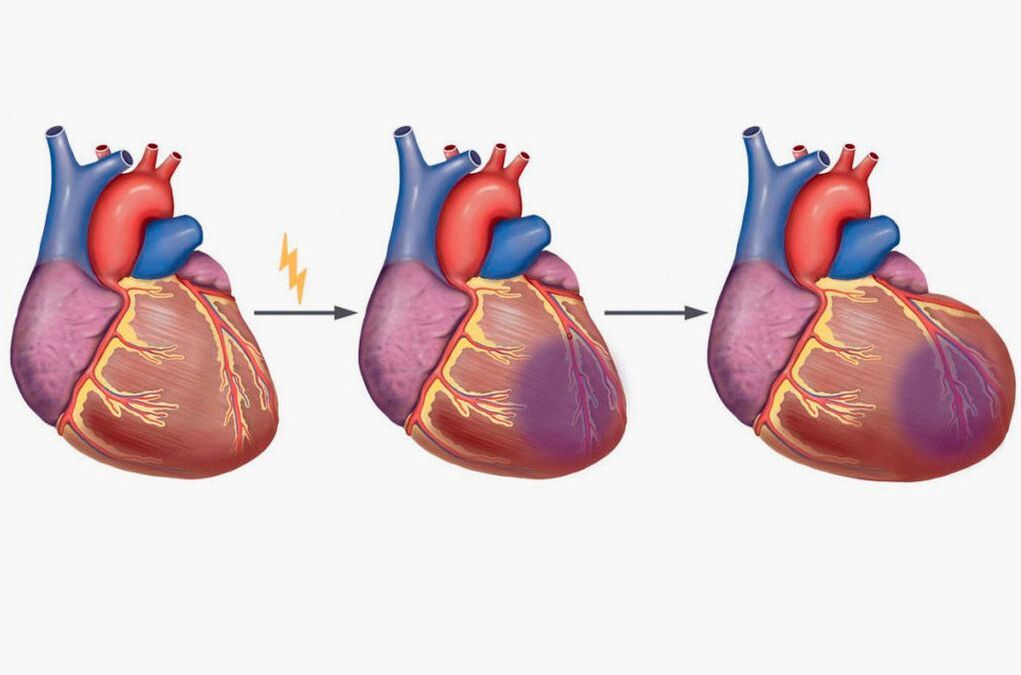
Like angina, myocardial infarction is a form of coronary heart disease.
During a heart attack, the condition is more dangerous, since the supply of oxygen to the heart muscle is completely blocked. If assistance is not provided in a timely manner, defibrillation and complete cessation of heart function may develop.
The patient experiences a feeling of fear and sweats profusely. When inhaling and exhaling, difficulty moving the chest is detected. The pain is acute, burning, and increasing in nature. Spreads to the left upper part of the body -possible pain in the area of the shoulder blade on the left.
The first priority before the ambulance arrives is to take nitroglycerin tablets. The condition requires immediate hospitalization.
Pericarditis
Pericarditis is inflammation of the heart sac. It can occur with the release of fluid into the cavity of the bag; with the formation of adhesions; mixed, when fluid accumulates and adhesions form.
The first and most important symptom isheartache. The pain is dull and aching, but not as severe as with coronary heart disease. It can also be felt in the scapular region, namely:under the left shoulder blade at the back.
Taking nitroglycerin for pericarditis does not relieve pain; nonsteroidal anti-inflammatory drugs are needed.
Pneumonia
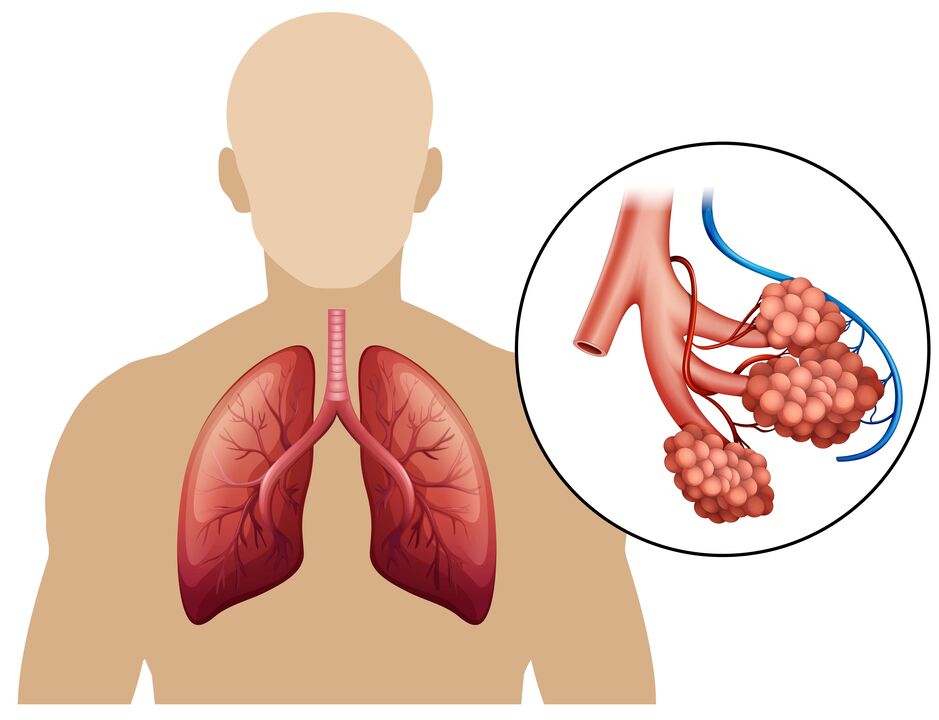
Pneumonia or pneumonia. In classic cases, it occurs with fever, cough, and severe shortness of breath. Pain occurs when inflammation spreads to the pleura, since there are no pain receptors in the lungs themselves.
The pain is low-intensity and is associated with breathing movements. Can be localizedin the interscapular area or behind the scapula behind. If the right lung is affected, then a sensation of pain on the right side is characteristic.
Pleurisy
Pleurisy is a complication of pneumonia or other inflammatory process in the lung tissue. Pain with pleurisy is of a pronounced nature, the intensity is related to the depth of respiratory movements. The deeper the breathing, the stronger the pain.
Unpleasant sensations in the area of the left and right shoulder blades at the back are accompanied by an increase in the frequency of respiratory movements. X-ray diagnostics are not always informative; only in some cases is fluid detected in the pleural cavity.
Inflammation of the gallbladder
Cholecystitis is inflammation of the gallbladder. It can be stone-like, with the formation of gallstones, or stone-free. The most striking symptom is pain and heaviness in the right hypochondrium. A pain impulse can also be felt in the area of the shoulder blades, or more precisely, under the shoulder blade on the right back.
Often cholecystitis is accompanied by a rise in temperature, vomiting, and jaundice.
Hepatic colic
If you do not treat and prevent complications of stone cholecystitis, it will inevitably lead to hepatic colic. In this case, the stone passes from the gallbladder into the bile ducts.
Characterized by sharp pain in the right hypochondrium. Possible pain on the right side behind, in the area of the right shoulder blade behind. The patient rushes about, trying to find a position that alleviates suffering.
Hepatic colic is often accompanied by a rise in temperature.
Pancreatitis

With pancreatitis, the pancreas, the most important organ for hormonal secretion, becomes inflamed. Symptoms from the gastrointestinal tract come to the fore: nausea and vomiting, which do not bring relief, diarrhea.
Accompanying weakness and rapid heartbeat (cardiac tachycardia). Acute inflammation is accompanied by girdling pain, felt equally strongly in the area of the shoulder blades on both sides.
If the head of the pancreas is predominantly affected, the pain is felt as a "shooting" in the projection of the scapula on the right and right behind.
Other other causes of pain
Symptoms cannot always be explained in terms of the above-mentioned disorders.
Other diseases that indicate pain in the shoulder blade area are:
- Bone injury after a direct blow. The shoulder blade is one of the strongest bones in the human body, and damage can only be caused by applying significant force.
- Malignant neoplasms of bone tissue: Ewing's sarcoma, osteosarcoma.
- Vertebral metastases. Introduced through lymph or blood, found in stomach tumors.
- Osteoporosis– decreased bone density. May lead to vertebral fractures. Characteristic of postmenopausal women due to a sharp decrease in the amount of estrogen.
- Subphrenic abscess– formation of purulent limited inflammation between the diaphragm and neighboring organs.
Low temperatures and physical activity can also cause pain in the scapular area.
In case of excessive exercise, the mechanism of pain is explained by excessive accumulation of lactic acid.
The causes of pain during hypothermia are as follows:muscle spasm – lack of oxygen – release of mediators – inflammation – activation of pain receptors.
The pain can be localized in the area of the left shoulder blade, in the area of the right shoulder blade, and also in the interscapular area. It depends on the working muscle or the location of the damaging factor - cold.
Complaints of back pain can occur among people of various professions that require constant static posture. These include surgeons, dentists, mechanics, painters, office workers and many others.
All of the above conditions are not diseases and are reversible with timely measures: rubbing, massage, preventive gymnastics, periodic changes in working positions.
Which doctor should I contact?
If you have pain in the scapula area, you should initially consult a therapist, who, after listening to the complaints, will send the patient to a surgeon, traumatologist, cardiologist or gastroenterologist.
Pain in the shoulder blade area is an important diagnostic symptom. It can be an expression of a large number of diseases, and therefore requires high-quality diagnosis. Treatment is selected by the doctor in accordance with the diagnosis and individual characteristics of the body.
Back pain between the shoulder blades in the morning: main causes, diagnosis and effective treatment
When the pain is localized in the middle of the back near the spine, you should always seek professional medical help from a medical facility. Attempts at self-medication through physical exercise, uncontrolled use of medications or traditional medicine methods can lead to rapid progression of the underlying disease or the development of its complications.
In addition to pain, the patient may experience impaired skin sensitivity on the arms and legs, decreased muscle strength, and other symptoms.
Clinical manifestations
Many people consider pain between the shoulder blades a misunderstanding that will go away on its own
Pain between the shoulder blades on the back after sleep can differ significantly in its characteristics. For example, unpleasant sensations can be aching, stabbing, bursting in nature, which is determined by the reasons for the occurrence of such a condition, as well as the characteristics of the patient’s body.
In addition, pain can spread along the spinal column to the lower or upper sections, and also radiate (give) to the arm, to the front surface of the chest or to one half of the back. In rare cases, a person cannot localize the place where he is in pain at all.
Severe pain radiating to the ribs or shoulder blades can make it difficult for the patient to breathe. This is due to a reflex decrease in the intensity of respiratory movements of the intercostal muscles. The feeling of lack of air occurs at night in the morning or immediately after waking up.
Main reasons
Spinal pain in the middle of the back after sleep can be associated with a large number of different causative factors. The following conditions most often cause this symptom.
- Degenerative changes in intervertebral discs. They can lead to compression of nerve trunks and blood vessels, causing the occurrence of all clinical manifestations.
- Traumatic back injuries. Very often they are not noticed by patients during the day, however, in the morning the pain syndrome intensifies significantly, leading to characteristic complaints.
- Mainly sedentary lifestyle. In particular, with similar work (drivers, office workers, etc. ). A low level of physical activity leads to a weakening of the muscular corset of the back, which is characterized by the appearance of pain in the vertebral area.

Sedentary work and a sedentary lifestyle are risk factors for spinal diseases
Osteochondrosis of the thoracic spinal column is characterized by pain in the interscapular region and in the neck in the morning and throughout the day. Such unpleasant sensations are associated with increasing compression of the roots of the spinal nerves and blood vessels.
In addition, there is increased tension in the back muscles, associated with a violation of their innervation and reflex spasm against the background of pain.
Scoliosis and other types of spinal curvature lead to chronic pain that worsens in the morning. As a rule, patients complain that after sleep their back hurts in the area of the shoulder blades. This disease tends to constantly progress and deteriorate a person’s well-being.
Pain syndrome develops for various reasons, and therefore, diagnostic measures in a hospital setting are necessary for every patient.
In addition, unpleasant sensations in this localization may be associated with an uncomfortable posture during sleep or an incorrect mattress on the bed. After such a night's rest, the back begins to hurt in the morning and throughout the day.
Diagnostic measures
If a person has back pain between the shoulder blades after sleep and this condition persists for two days, then he needs to seek medical help at a medical institution. It is best to make an appointment with a general practitioner who will help identify the cause of the pain syndrome.
The diagnostic algorithm is as follows:
- Careful collection of all patient complaints, allowing us to identify additional features of the course of the disease, as well as questioning about the person’s living and working conditions.
- Clinical examination aimed at identifying orthopedic and other pathologies.
- A general urine and blood test to assess general health and underlying illnesses.
- If you suspect a neurological cause of pain in the middle of the back, you should consult a neurologist.
- X-ray examination of the spinal column in the cervical and thoracic region in the presence of postural curvatures or osteochondrosis.
- Consultations with other doctors.

This diagnostic assistance algorithm allows the doctor to make an accurate diagnosis and select effective therapy.
Treatment methods
Medical care for patients with these symptoms consists of quickly eliminating them, as well as combating the underlying disease, if present. Treatment can be carried out on an outpatient basis or in a hospital.
Effective treatment of pain is possible only in a hospital setting or an outpatient visit to a doctor. The doctor conducts a full clinical examination of the patient using various laboratory and instrumental methods, after which he selects therapy.
Main groups of drugs:
- non-steroidal anti-inflammatory drugs to combat pain and inflammation;
- muscle relaxants to cope with muscle spasms;
- for chronic pain, the patient is prescribed antidepressants;
- physiotherapy (magnetic therapy, ultrasound), which allows for a local therapeutic effect on the site of injury;
- physical therapy and massage outside of exacerbation.
The selection of a specific method of therapy should be based on an analysis of the patient’s indications and contraindications, and therefore only a doctor can prescribe and adjust medications.
Gymnastic exercises
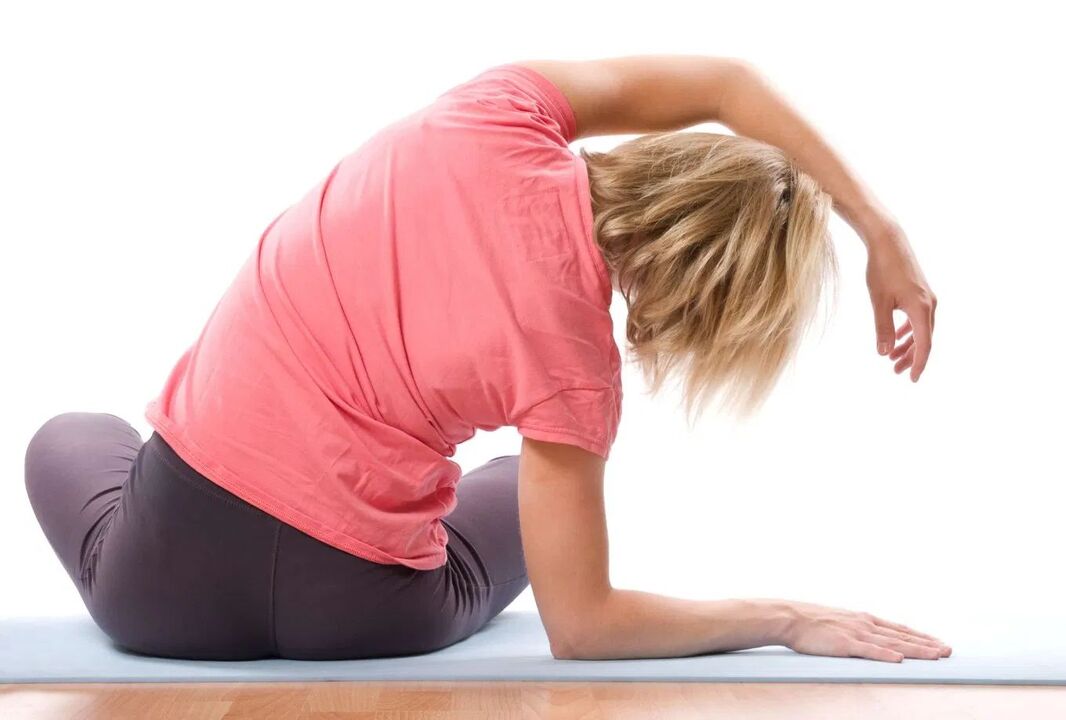
Inflammatory changes in tissues lead to severe pain, which limits a person’s motor activity. Moreover, during the acute period of the disease, the patient cannot do special gymnastics and massage - such activity leads to increased pain and the inability to sleep at night.
Regular physical exercise, adequate to the person’s level of training, allows you to strengthen the muscles of the back and body, which has a beneficial effect on the patient’s health. It is very important to perform such a load only after consultation with a specialist and a medical examination.
The appearance of back pain in the morning is a serious symptom, often indicating the presence of spinal diseases.
In this regard, if such complaints persist for two days, a person should always contact the attending physician at a medical institution to conduct an examination and identify the causes of the discomfort.
Effective therapy includes the use of medications, exercise therapy, and physical therapy.
When you need a doctor for pain under the shoulder blade
If the pain under the shoulder blade appeared for the first time and quickly passed, then it was probably associated with an accidental cause - for example, the body was in an uncomfortable position for a long time. If the pain persists, intensifies or causes discomfort (in case of severe pain), you should definitely consult a doctor.
In some cases, emergency medical attention is required. Call an ambulance if:
- pain under the shoulder blade is associated with injury. Especially in the presence of bleeding and signs of bone fracture;
- along with pain, deformation, swelling, edema or redness in this area is observed;
- pain is accompanied by increased heartbeat, difficulty breathing (shortness of breath, feeling of lack of air);
- the pain is accompanied by dizziness and faintness.
Pain under the shoulder blade: which doctor should I contact?
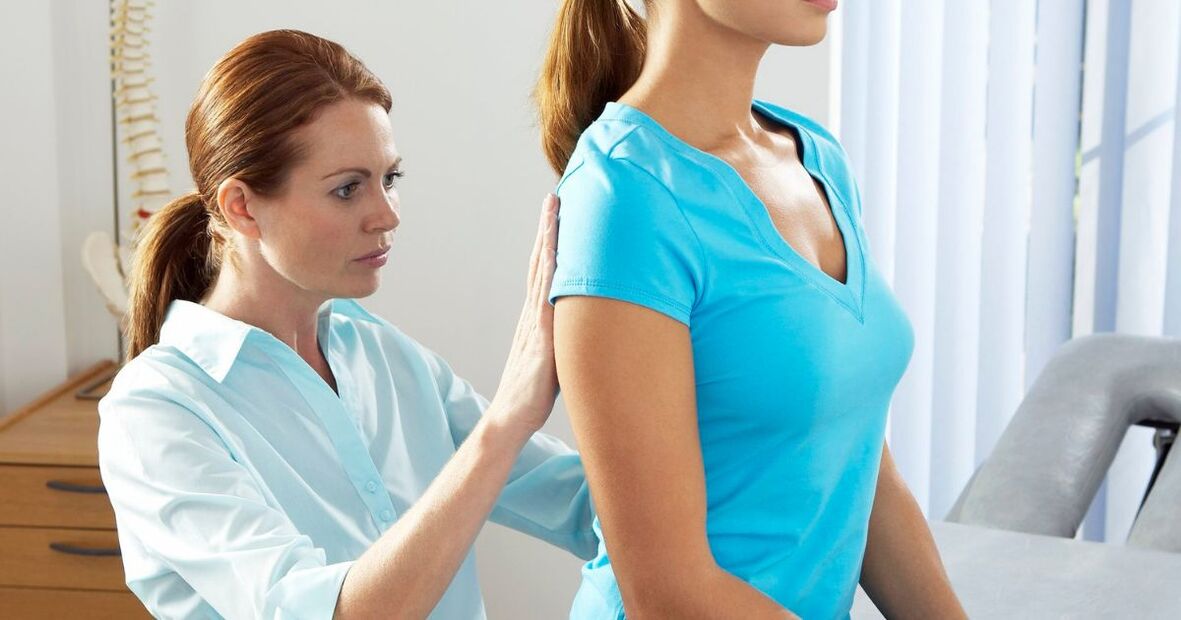
If you complain of pain under the shoulder blade, it is recommended to consult a general practitioner (general practitioner or family doctor). It is the general practitioner who must determine which specialists should be examined.
If the pain under the shoulder blade is associated with eating, accompanied by heartburn, belching, or a feeling of bitterness in the mouth, you will probably need to consult a gastroenterologist.
If there is reason to believe that the pain is related to the spine, for example, if the pain intensifies with movement of the torso or shoulder, then you will be referred to a neurologist, vertebroneurologist or chiropractor.
You must be prepared that you may need to consult a cardiologist or urologist.
Prevention
The most painless and correct solution for preventing back pain is the following preventive measures:
- Pay attention to sleep hygiene, especially if you have back pain in the shoulder blades or neck at night. Buy an orthopedic mattress and a comfortable pillow. A smooth, moderately hard sleeping surface maintains the anatomical shape of the curves, relieves muscle spasms and prevents curvature of the spinal column.
- Watch your posture in any situation. If your own efforts are not enough for this, use a corrective corset.
- Equip your workplace with a comfortable chair with an orthopedic effect. Additionally, you can use special bolsters for your back and neck.
- When working for long periods of time, try to take regular five-minute breaks. A few squats and arm swings will help slightly relax muscle tension and spasms.
- Eat a balanced diet. This will provide the musculoskeletal system with the necessary supply of nutrients.
But the most important thing is to move. Only constant physical activity will allow you to maintain the body’s performance in its original form. Remember: what is not used degrades.
















































